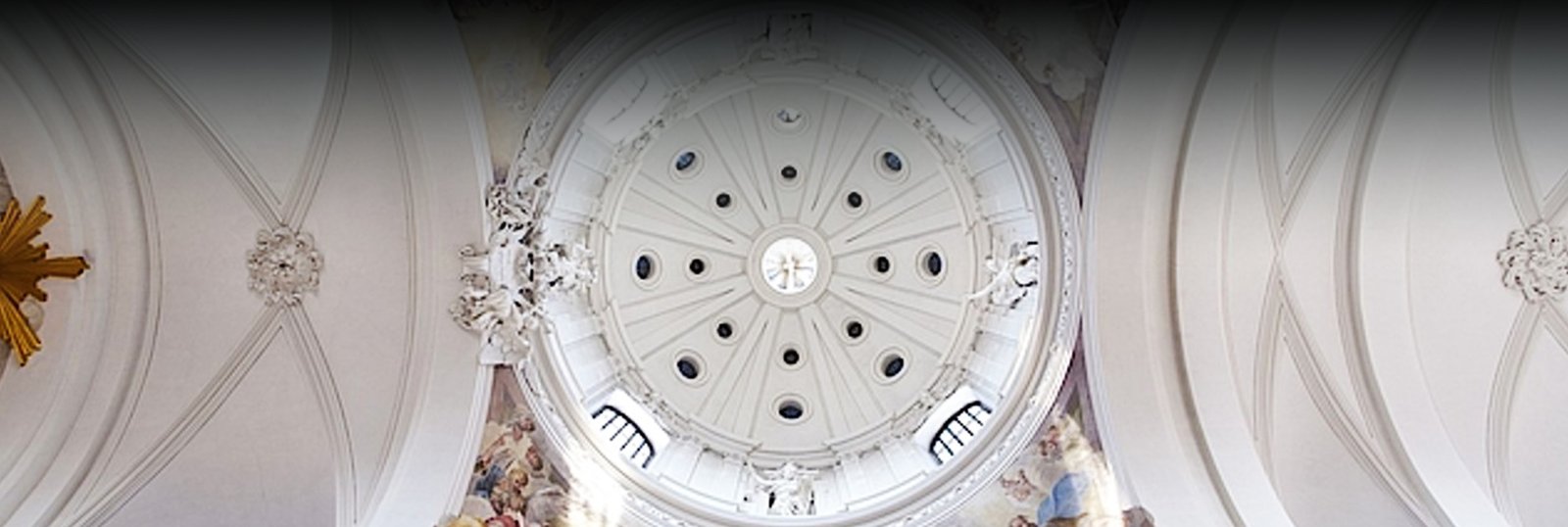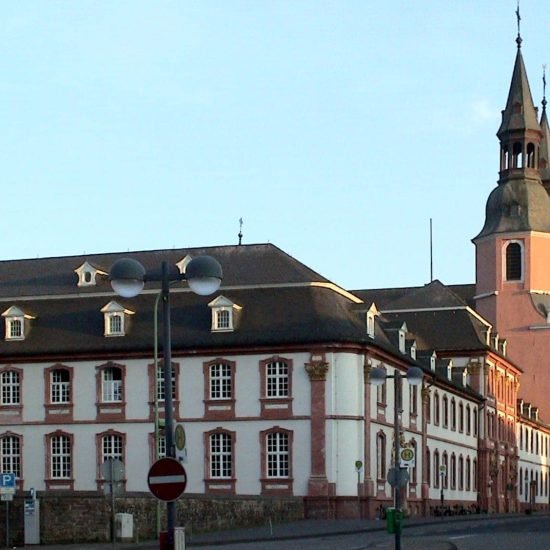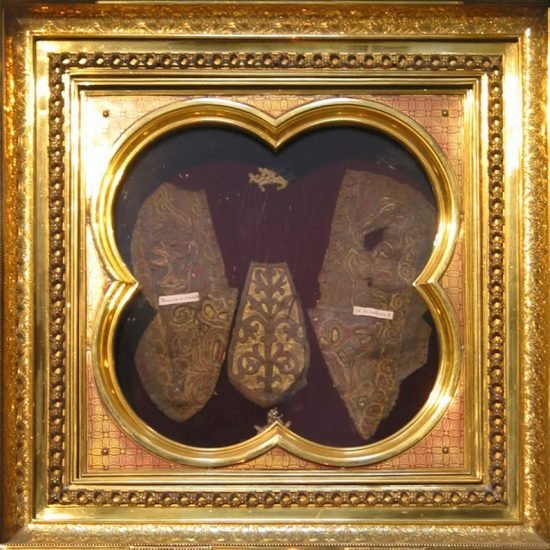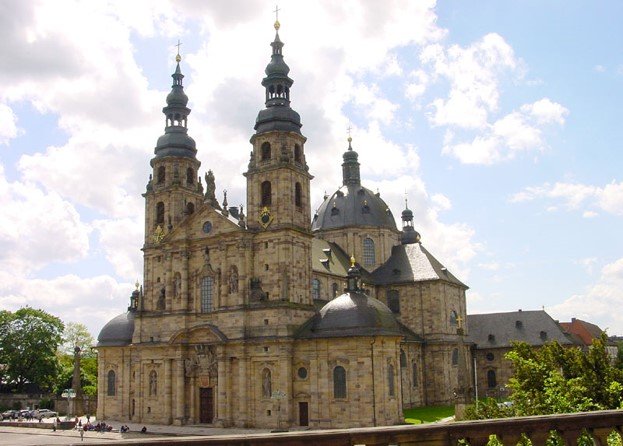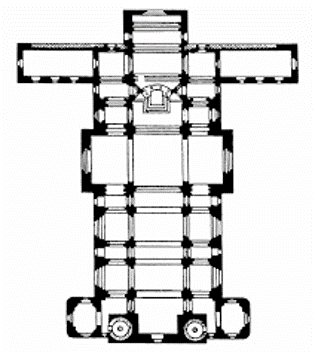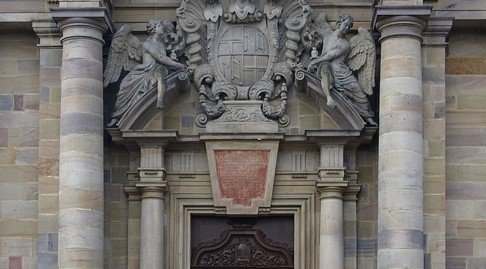Monastery of St. Salvator
per person
The Cathedral is not just Fulda’s famous, characteristic landmark, it is also the most significant baroque church in the state of Hesse. Following in the tradition of the Roman baroque style, the Cathedral was built by the architect Johann Dientzenhofer between the years 1704 and 1712. Parts of the previous church, the ninth century Ratger Basilka, were integrated in the baroque construction. The great religious significance of the church derives from the fact that it contains the tomb of St. Boniface. Still today it is an important place of pilgrimage.
FORMAL ANALYSIS
The foundation of the Benedictine monastery in Fulda can be dated to the year 744. According to this, the monastery was built by the later first abbot, named Sturmi, by order of Boniface. Excavations carried out in the course of the last century revealed remains of such a church building, as well as several secular buildings, which may themselves have been part of the monastery complex. When Boniface died, Sturmi was able to impose that very monastery as the place of his burial. As early as 791, a new church building was begun under Abbot Baugulf, who handed over the planning and management to the monk Ratger, who gave the name to the building. This new nave is said to be approximately the same size as today’s cathedral. In addition, Ratger had a west transept built. This intensive building program was continued under abbot Eigil. He had an east and a west crypt added to the monastery church. In the cemetery, the Chapel of St. Michael was built, the crypt of which is still preserved today. This construction work on this important monastic complex was finally to reach its first conclusion under the abbot Hrabanus Maurus during the 9th century. Under his tenure, the monastery experienced its great heyday and became the training ground for many famous clerics, such as Otfried of Weißenburg, Walafried Strabo or Luppus of Ferrières.
A number of important Old High German texts were also passed down through the teaching and copying activities in Fulda, such as the famous „Hildebrandslied“. In the course of the 10th century, renewed building measures took place, which underlined Fulda’s status as an imperial abbey. A royal chapel was added to the monastery complex, along with a representative building for the king as well as residential facilities. As a result, the entire monastery complex was now symmetrical. In the centre was the church with the tomb of the founder, to the west was the clerical-monastic area, and to the east the secular-royal area.
Eventually, in the course of the formation of the abbot’s sovereignty, the old monastery church increasingly lost its original function. At the beginning of the 14th century, the abbot, as a prince-abbot, moved his seat outside the monastery, so that the latter had to experience a decline already in the late Middle Ages. Finally, at the beginning of the 18th century, a new collegiate church was built. This new building also marked the beginning of a transformation of the townscape of Fulda, which until 1700 was still predominantly characterized by medieval structures. This townscape now increasingly changed with new building projects that brought Baroque architecture to Fulda. This baroque transformation took over in large parts the ground plan dispositions of the existing buildings from medieval times and redesigned the facades. This can also be observed with the Fulda collegiate church, as it stands on the site of the Ratger Basilica, which was largely demolished in the process. The plans of the new church were drawn up in 1700 by one of the greatest German Baroque architects, Johann Dientzenhofer, who was commissioned by the prince-abbot Adalbert von Schleifras for the new building on the recommendation of the Pope after Dientzenhofer’s study trip to Rome in 1699. The deliberate similarity of the church’s internal arrangement to that of St. Peter’s Basilica in Rome is testimony to Dientzenhofer’s visit. In 1707 the shell was completed. The roof was finished in 1708 and the interior in 1712. The new abbey church was dedicated on 15 August 1712. The dedication tablet placed on the facade by von Schleifras gives the dedication as Christus Salvator.
FLORIAN HARTMANN
- MONASTERY OF ST. SALVATOR© PHOT. https://en.wikipedia.org/wiki/Princely_Abbey_of_Fulda#/media/File:Catedral_de_Fulda.jpg
- PLAN MONASTERY OF ST. SALVATOR© PLAN. https://www.kirchenzeitung.de/sites/bz5.bistumspresse-zentralredaktion.de/files/file/extra-ausgaben/02_08.dombeilage.pdf
- MAIN ENTRANCE© PHOT. https://de.wikipedia.org/wiki/Fuldaer_Dom#/media/Datei:Fulda_dom_maineast.jpg
- GRAVE OF ST.BONIFACE© PHOT. https://de.wikipedia.org/wiki/Fuldaer_Dom#/media/Datei:Fulda-Dom-Gruf-Bonifatius.jpg
- CUPOLA AND INTERIOR TOWARDS THE HIGH ALTAR© PHOT. https://www.tourismus-fulda.de/sehenswuerdigkeiten/sehenswertes/einzelansicht/2/dom-1?cHash=bf0ee4720c3c707fe4a211bd77ea8917
Información de la localidad
Cathedral St. Salvator
| Other monuments and places to visit | The Residence The Reisdence Garden, the Oragnerie and the Flora Vase Baroque Quarter Old town As well as many differnt museums or historical churches such as e.g. the Benedictine Abbey St. Maria, founded in 1626. |
| Natural Heritage | Many park areas such as the Fulda-Aue , which is located only a few minutes from the city centre and provides many opportunities e.g. for cycling or canoeing, as well as many gardens that can be visited. |
| Historical Recreations | |
| Festivals of Tourist Interest | Fulda Musical Summer (from mid-June to mid-August) (Booking Packages including an overnight stay are available) |
| Fairs | Shooting club festival (second last Friday in July – first Sunday in August) Christmas market (last Friday in November – 23rd December) |
| Tourist Office | Yes (tourismus-fulda.de) |
| Specialized Guides | Yes |
| Guided visits | Yes |
| Accommodations | Yes there are many hotels as well as holiday flats available. |
| Restaurants | Many restaurant options are available |
| Craft | |
| Bibliography | |
| Videos | |
| Website | tourismus-fulda.de |
| Monument or place to visit | Cathedral St. Salvator |
| Style | Baroque |
| Type | Monastic architecture |
| Epoch | 8th-10th / 19th centuries |
| State of conservation | Good condition |
| Mailing address | Domplatz 1 D-36037 Fulda Germany |
| Coordinates GPS | 50°33′14″N 9°40′18″E |
| Property, dependency | Bishopric of Fulda |
| Possibility of visits by the general public or only specialists | General public visits |
| Conservation needs | |
| Visiting hours and conditions | 1st April to end of october: Monday till Friday from 10.00 am to 7.00 pm On Saturdays from 10.00 am to 3.00 pm On Sundays and Holidays during the afternoon hours from 1.00 pm to 7.00 pm End of october to 31st March: Monday till Friday from 10.00 am to 5.00 pm On Saturdays from 10.00 am to 3.00 pm On Sundays and Holidays during the afternoon hours from 1.00 pm to 6.00 pm The visit of the catedral is only allowed outside of service and organ recitals, (held every Saturday moring in the months May, June, July, September and October from 12:05 pm -12.35 pm) Opening-hours for the museum: (from 1st April to 31st october) Tuesday till Saturday from 10.00 am -1230 pm and from 13.30-5 pm; on Sundays and holidays from 12.30 pm to 5.00 pm; (from 1st november till 31st March) Tuesday till saturday from 10.00 am-12.30 pm and from 13.30-.004 pm; on Sundays and holidays from 12.30 am to 4.00 pm. |
| Ticket amount | For the museum: 3 euros (adults); 2 euros (for pupils and students); guided tours are avaiable, the prize being 2 Euros (adults) and 1 euro (students, pupils). Tickets for the recitals: 5 euros |
| Research work in progress | |
| Accessibility | Good; also accesible for disabled people |
| Signaling if it is registered on the route | |
| Bibliography | Ludwig Pralle: Fulda. Dom und Abteibezirk. Königsstein im Taunus 1977. Ulrich Hussong: Die Reichsabtei Fulda im frühen und hohen Mittelalter. Mit einem Ausblick auf das späte Mittelalter. In: Historische Kommission von Hessen (Hg.): Fulda in seiner Geschichte. Marburg 1995. Gregor K. Stasch: Der Fudaer Dom zwischen Tradition und “Neuem Bauen”. In: In: Historische Kommission von Hessen (Hg.): Fulda in seiner Geschichte. Marburg 1995. Danile Hanke: Der Dom zu Fulda: der Bau und seine Ausstattung. Hamburg 2008. Gregor Karl Stasch: Der Fuldaer Dom als Grabstätte des heiligen Bonifatius. In: Ders. (Hg.): Bonifatius. Vom angelsächsichen misionar zum Apostel der Deutschen. Petersberg 2004, S. 141-178. Richard Laibach: Fast 1000 Jahre älter als der Dom: die Fuldaer Stifutskriche und ihre vier bauherren. In: Buchenblätter 92 /3 (2019), S. 14-15. |
| Videos | |
| Information websites | bistum-fulda.de wikipedia.org tour.mi360.de (virtual tour of the cathedrale and the museum) |
| Location | 36037 Fulda, Hesse (Germany) |


